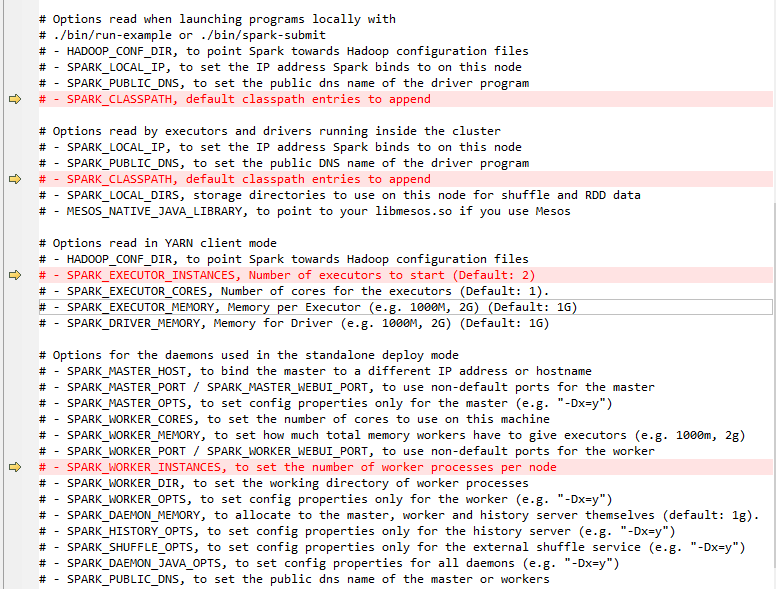參考文章:https://apacheignite-fs.readme.io/docs/installation-deployment
Spark application deployment model allows dynamic jar distribution during application start. This model, however, has some drawbacks:
- Spark dynamic class loader does not implement
getResourcemethods, so you will not be able to access resources located in jar files. - Java logger uses application class loader (not the context class loader) to load log handlers which results in
ClassNotFoundExceptionwhen using Java logging in Ignite.
There is a way to alter default Spark classpath for each launched application (this should be done on each machine of the Spark cluster, including master, worker and driver nodes).
- Locate the
$SPARK_HOME/conf/spark-env.shfile. If this file does not exist, create it from template using$SPARK_HOME/conf/spark-env.sh.template - Add the following lines to the end of the
spark-env.shfile (uncomment the line settingIGNITE_HOMEin case if you do not have it globally set):
# Optionally set IGNITE_HOME here.
# IGNITE_HOME=/path/to/ignite IGNITE_LIBS="${IGNITE_HOME}/libs/*" for file in ${IGNITE_HOME}/libs/*
do
if [ -d ${file} ] && [ "${file}" != "${IGNITE_HOME}"/libs/optional ]; then
IGNITE_LIBS=${IGNITE_LIBS}:${file}/*
fi
done export SPARK_CLASSPATH=$IGNITE_LIBS
You can verify that the Spark classpath is changed by running bin/spark-shell and typing a simple import statement:
scala> import org.apache.ignite.configuration._
import org.apache.ignite.configuration._
官方給出的以上解決方案,在spark2.1上是可以的,但是在spark2.2中不起作用,對比了一下spark2.1和spark2.2中的spark-env.sh指令碼,發現其中一些變數,在spark2.2中不存在了:
